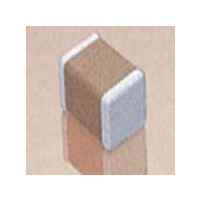08055E104MAT2A AVX Corporation, 08055E104MAT2A Datasheet - Page 18

08055E104MAT2A
Manufacturer Part Number
08055E104MAT2A
Description
Capacitor, Ceramic; 0.1uF; Chip; Case 0805; +/-20%; 50WVDC; SMD; Z5U; 100000 Mohm; 0.05I
Manufacturer
AVX Corporation
Series
0805r
Specifications of 08055E104MAT2A
Tolerance (+ Or -)
20%
Voltage
50VDC
Temp Coeff (dielectric)
Z5U
Operating Temp Range
10C to 85C
Mounting Style
Surface Mount
Construction
SMT Chip
Case Style
Ceramic Chip
Failure Rate
Not Required
Wire Form
Not Required
Product Length (mm)
2.01mm
Product Depth (mm)
1.25mm
Product Height (mm)
1.3mm
Product Diameter (mm)
Not Requiredmm
Capacitance
.1uF
Package / Case
0805
Brand/series
AVX
Case Code
0805
Case Size
0805
Dielectric Strength
No breakdown or visual defects
Insulation Resistance
100000 Megohms
Length
0.079 in. ± 0.008 in.
Material, Element
Ceramic
Package Type
0805
Temperature, Operating, Maximum
125 °C
Temperature, Operating, Minimum
-55 °C
Termination
SMT
Tolerance
±20 %
Voltage, Rating
50 VDC
Width
0.049 in. ± 0.008 in.
Voltage Rating
50 Volts
Operating Temperature Range
+ 10 C to + 85 C
Temperature Coefficient / Code
Z5U
Product
General Type MLCCs
Dimensions
0.049 in W x 0.079 in L x 0.930 mm H
Termination Style
SMD/SMT
Lead Free Status / RoHS Status
Compliant
General Description
Energy Stored – The energy which can be stored in a
capacitor is given by the formula:
Potential Change – A capacitor is a reactive component
which reacts against a change in potential across it. This is
shown by the equation for the linear charge of a capacitor:
where
Thus an infinite current would be required to instantly
change the potential across a capacitor. The amount of
current a capacitor can “sink” is determined by the above
equation.
Equivalent Circuit – A capacitor, as a practical device,
exhibits not only capacitance but also resistance and induc-
tance. A simplified schematic for the equivalent circuit is:
Reactance – Since the insulation resistance (R
very high, the total impedance of a capacitor is:
where
The variation of a capacitor’s impedance with frequency
determines its effectiveness in many applications.
Phase Angle – Power Factor and Dissipation Factor are
often confused since they are both measures of the loss in a
capacitor under AC application and are often almost identi-
cal in value. In a “perfect” capacitor the current in the
capacitor will lead the voltage by 90°.
R
C = Capacitance
s
dV/dt = Slope of voltage transition across capacitor
= Series Resistance
X
R
X
Z = Total Impedance
C
L
s
Z =
C = Capacitance
L
E = energy in joules (watts-sec)
V = applied voltage
C = capacitance in farads
I = Current
= Series Resistance
= Capacitive Reactance =
= Inductive Reactance
R
2
S
+ (X
I
C
ideal
- X
R
= C dV
E =
L
S
)
2
dt
1
⁄
2
CV
R
L = Inductance
p
2
= Parallel Resistance
= 2 π fL
2 π fC
1
R
C
P
p
) is normally
In practice the current leads the voltage by some other
phase angle due to the series resistance R
ment of this angle is called the loss angle and:
for small values of
which has led to the common interchangeability of the two
terms in the industry.
Equivalent Series Resistance – The term E.S.R. or
Equivalent Series Resistance combines all losses both
series and parallel in a capacitor at a given frequency so
that the equivalent circuit is reduced to a simple R-C series
connection.
Dissipation Factor – The DF/PF of a capacitor tells what
percent of the apparent power input will turn to heat in the
capacitor.
The watts loss are:
Very low values of dissipation factor are expressed as their
reciprocal for convenience. These are called the “Q” or
Quality factor of capacitors.
Parasitic Inductance – The parasitic inductance of capac-
itors is becoming more and more important in the decou-
pling of today’s high speed digital systems. The relationship
between the inductance and the ripple voltage induced on
the DC voltage line can be seen from the simple inductance
equation:
Dissipation Factor = E.S.R. = (2 π fC) (E.S.R.)
Watts loss = (2 π fCV
Loss
Angle
Power Factor (P.F.) = Cos
Dissipation Factor (D.F.) = tan
V = L di
I (Ideal)
dt
E.S.R.
IR
I (Actual)
the tan and sine are essentially equal
f
s
2
) (D.F.)
X
C
Phase
Angle
f
or Sine
C
S
. The comple-
V
39











